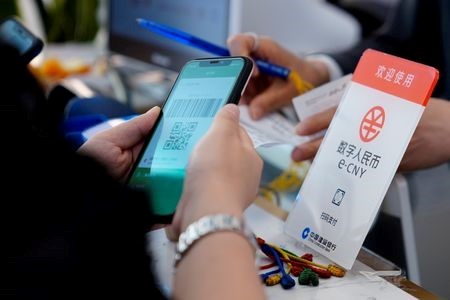




Philippines Trade Update: Exports momentum continues
 DOWNLOAD
DOWNLOAD

Quarterly Economic Growth Release: More BSP cuts to come
 DOWNLOAD
DOWNLOAD

Monthly Economic Update: Fed catches up
 DOWNLOAD
DOWNLOAD


China companies rush to currency derivatives as yuan bounces lower

SHANGHAI, Oct 13 (Reuters) – A record number of listed firms in China are embracing currency derivatives and fuelling a boom in onshore trade of the instruments, the latest data shows, as companies and investors rush for protection from the yuan’s sharp drop against the dollar.
That should please Chinese regulators who have for years been pushing companies to pursue risk-neutral hedging, but the derivatives rush has proved a double-edged sword with bearish bets on the yuan also threatening to add unwelcome pressure on China’s currency.
“In reality, it’s difficult to be risk-neutral: Most company executives have their views on currency trends,” said Chen Hongting, an options trading advisor.
He said the dollar’s strength seems “unstoppable” and it would be natural for companies to act in line with that trend. If they end up making sizeable bearish bets via derivatives, he added, that could drag the yuan’s spot price down further.
The yuan has tumbled more than 11% this year against a surging US dollar and at one point hit its lowest since the 2008 global financial crisis, weighed down by US monetary tightening and China’s economic slowdown.
Rising global uncertainty and higher yuan volatility have spurred corporate demand for risk-hedging, said Liu Wencai, founder of risk management consultancy D-Union.
According to D-Union data, 814 China-listed companies announced transactions in foreign exchange forwards, swaps or options in the first nine months of this year, a jump of 26% from a year earlier.
A number of companies, including industrial equipment maker Suzhou Mingzhi Technology Co 688355.SS and commodities trader Fujian Sanmu Group Co 000632.SZ, unveiled plans in recent weeks to start or increase foreign exchange derivatives trading, citing rising currency risks.
“Currency fluctuations have become more frequent, adding to operational uncertainty,” Mingzhi Technology said in an exchange filing.
Companies’ derivatives trading, however, appears biased towards the greenback.
Corporate dollar purchases have been exceeding dollar sales in newly signed forward contracts since April, indicating outflow pressure worth USD 35.7 billion amassed in the April-September period and reversing a three-year pattern of inflows.
Currency forward contracts set an exchange rate for future transactions, but the depreciation pressure is felt in the spot market.
In the first half of this year, foreign exchange risk-hedging by Chinese companies totalled USD 755.8 billion, up 29% from a year ago, China’s central bank said on Tuesday.
That hedging may have accelerated further since then, as market swings became more extreme.
Yuan derivative trading in the interbank, or wholesale, market is also active, with yuan currency options trading hitting a monthly record in September.
Regulators have been pushing for companies to be risk neutral by fully hedging their net foreign currency exposure, rather than seeking to profit from currency movements in a particular direction.
In a brochure promoting yuan derivative products, the State Administration of Foreign Exchange, China’s currency market regulator, said: “Having a rational view of forex volatility, and properly managing currency risks, have become a mandatory course for companies” with foreign exchange exposure.
Some have taken this guidance to heart, including Jin Shengrong, finance manager at importer Nanjing Golden Chemical Co, who said he is adopting risk neutrality in hedging because he’s not sure where the yuan is heading.
While the yuan may fall further against a buoyant dollar, continued weakness could also invite central bank intervention, he said.
(USD 1 = 7.1767 Chinese yuan renminbi)
(Reporting by Samuel Shen and Vidya Ranganathan; Editing by Edmund Klamann)
This article originally appeared on reuters.com





 By Reuters
By Reuters